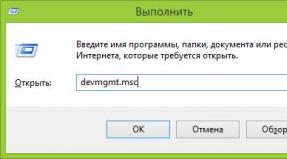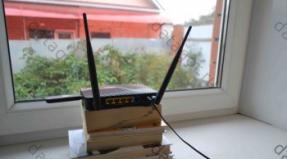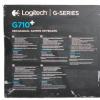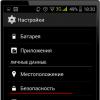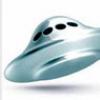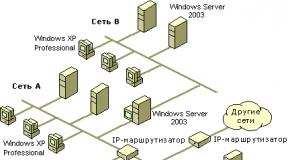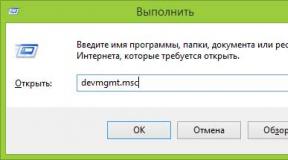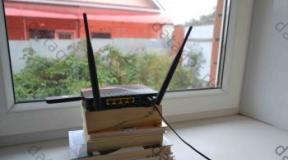Documentation for GOST software. GOST standard for software documentation. Effect of this Policy
The Unified System of Documentation of Software Products - ESPD - belongs to GOST class 19 and is divided into 10 groups:
1. Fundamental Standards.
2. Rules for executing development documentation.
3. Rules for executing manufacturing documentation.
4. Rules for the implementation of support documentation.
5. Rules for the implementation of operational documentation.
6. Rules for circulation of software documentation.
Standard number 0 contains general provisions, standards 7 and 8 are reserved, and number 9 includes other standards not included in the first 6.
These are brief descriptions of GOSTs of class 19; for more detailed information, please refer to the reference books.
- GOST 19.001-77 – a unified system of program documentation.
- GOST 19.101-77 – types of programs and program documents.
- GOST 19.102-77 – stages of development of programs and program documentation.
- GOST 19.105-78 – requirements for the design of program documents, complexes and systems, regardless of their purpose and scope. GOST 19.105-78 contains a complete list of documentation that must accompany the finished software product.
List of documentation declared by GOST 19.105-78:
1. Documents containing information necessary for the development of a software product and its manufacture.
1.1. Specification – the composition of the program and its documentation.
1.2. List of original holders - a list of enterprises where original program documentation is stored.
1.3. Program text – record the program text with the necessary comments.
1.4. Program description – information about the logical and functional structure of the program.
1.5. Test program and methodology - requirements to be verified when testing the program, procedure and methods for their control.
1.6. Terms of reference – purpose and scope of application of the program, technical and special requirements, necessary stages and terms of development, types of tests.
2. Documents used when operating the software product.
List of operational documents – a list of operational documents for the program.
Form – main characteristics of the program, completeness, general information about the operation of the program.
Description of application - information about the purpose of the program, scope of application, class of tasks to be solved, restrictions on use, required configuration of hardware.
System Programmer's Guide - information for checking and ensuring functionality, setting up the program.
Programmer's Guide - information for operating the configured program.
Operator's manual - information to ensure the procedure for communication between the operator and the computer during program execution.
Language description – description of the syntax and semantics of the language used in the program.
Maintenance Manual - information for using test programs when servicing technical equipment.
Other GOSTs class 19:
- GOST 19.201-78 – the procedure for constructing and preparing technical specifications for the development of a program or software product.
- GOST 19.202-78 – form and procedure for drawing up specifications for software products defined in GOST 19.101-77.
- GOST 19.301-79 – program and methodology for testing software products.
- GOST 19.401-78 – the procedure for constructing and formatting program text when developing software products.
- GOST 19.402-78 – description of the program.
- GOST 19.403-79 – form of completion and content of the list of original holders, defined in GOST 19.105-78.
- GOST 19.404-79 – form of completion and content of the explanatory note, defined in GOST 19.105-78.
- GOST 19.501-78 – form of filling out and contents of the form for a software product, defined in GOST 19.105-78.
- GOST 19.502-78 – form of filling and content of the application description defined in GOST 19.105-78.
- GOST 19.503-79 – form of completion and content of the system programmer’s manual, defined in GOST 19.105-78.
- GOST 19.504-79 – form of completion and content of the programmer’s manual, defined in GOST 19.105-78.
- GOST 19.505-79 – form of completion and content of the operator’s manual, defined in GOST 19.105-78.
- GOST 19.506-79 – form of completion and content of the description of the language defined in GOST 19.105-78.
- GOST 19.507-79 – form of completion and content of the list of operational documents, defined in GOST 19.105-78.
- GOST 19.508-79 – form of completion and content of the maintenance manual, defined in GOST 19.105-78.
- GOST 19.701-90 – diagrams of algorithms, programs, data and systems.
G O S U D A R S T V E N N Y S T A N D A R T S O Y W A S S R
|
Technical documentation system for automated control systems |
GOST 24.207-80 |
REQUIREMENTS FOR THE CONTENT OF SOFTWARE DOCUMENTS |
|
| System of technical documentation for computer control systems. Requirements for contents of documents on software |
By Decree of the USSR State Committee on Standards dated May 14, 1980 No. 2101, the introduction date was established
from 01/01/1981
This standard applies to technical documentation for automated control systems (ACS) of all types, developed for all levels of management (except for national ones), and establishes requirements for the content of documents included in accordance with GOST 24.101-80 as part of the software documentation in ACS projects.
1. GENERAL PROVISIONS
1.1. The software documentation is intended to:
- to describe design solutions for software in the document “Description of ACS Software”.
- to establish requirements for a program (set of programs) in the “Technical Specifications” document;
- to describe solutions that provide maintenance, production and operation of a program (set of programs) in the documents “Explanatory Note”, “Description of Application”, “Description of the Program”, “Specification”, “Programmer’s Guide”, “Operator’s Guide”, “Program Text” , “Form”, “Procedure and testing methods”;
- to check the functionality of the program (set of programs) in the document “Description of the test case”.
1.2. When developing documents for parts of an automated control system, the content of sections of each document is limited to the framework of the corresponding part.
1.3. Depending on the purpose and specific features of the created automated control systems, it is allowed to include additional sections in documents, the content requirements of which are not established by this standard. The absence of design solutions for a section of the document is recorded in the appropriate section with the necessary explanations.
1.4. Requirements for the content of documents “Technical Specifications”, “Explanatory Note”, “Description of Application”, “Specification”, “Operator’s Manual”, “Program Text”, “Form”, “Test Procedure and Methodology” are established by GOST 19.201-78, GOST 19.404-79, GOST 19.502-78, GOST 19.202-78, GOST 19.505-79, GOST 19.401-78, GOST 19.501-78 and GOST 19.301-79.
(Changed edition, Amendment No. 1).
2. REQUIREMENTS FOR THE CONTENT OF DOCUMENTS
2.1. Description of ACS software
2.1.1. The document must contain an introductory part and sections:
- software structure;
- the main functions of the software parts;
- software development methods and tools;
- operating system;
- tools that expand the capabilities of the operating system.
2.1.2. The introductory part should contain basic information about the technical, information and other types of automated control system support necessary for software development, or a link to the relevant documents of the automated control system project.
2.1.3. The “Software Structure” section should contain a list of software parts, indicating their relationships and the rationale for identifying each of them.
2.1.4. The section “Main functions of software parts” should contain subsections in which, for each part of the software, the purpose and description of the main functions are given.
(Changed edition, Amendment No. 1).
2.1.5. The section “Methods and tools for software development” should contain a list of programming methods and tools for developing automated control system software, indicating parts of the software in the development of which appropriate methods and tools should be used.
2.1.6. The "Operating System" section should contain:
- name, designation and brief description of the selected operating system and its version, within which the developed programs will be executed, with justification for the choice and indication of sources where a detailed description of the selected version is given;
- the name of the manual in accordance with which the selected version of the operating system should be generated;
- requirements for the generation option of the selected operating system version.
2.1.7. The “Tools that extend the capabilities of the operating system” section should contain subsections in which for each tool used that extends the capabilities of the operating system, you should indicate:
- name, designation and brief description of the product, justifying the need for its use and indicating the source, which provides a detailed description of the selected product;
- the name of the manual in accordance with which the product used should be configured for a specific application;
- requirements for setting up the tool used.
2.2. Program description
2.2.2. For a program (set of programs) obtained through the use of previously developed software, the “Program Description” document should be supplemented with the “Software Setup” section.
2.2.3. The “Software Configuration” section should contain:
- name, designation of the software used, description of the procedures required to configure them, or links to the operational documentation of these tools;
- a list of elements of used software necessary to obtain the program (set of programs);
- description of the settings in the language provided in the operational documentation for the software used.
2.3. Programmer's Guide
2.3.1. The document on the composition of the sections and their content must comply with GOST 19.504-79 and, in addition, include the section “Information on the form of presentation of the program (set of programs).”
2.3.2. The section “Information about the form of presentation of the program (set of programs)” must contain information about the medium on which the program is recorded, about the content and coding system of information recorded on the medium, as well as information necessary for reading information from the medium.
2.3.3. For a program (set of programs) that can be customized to the conditions of a specific application, the “Programmer’s Guide” document includes sections:
- program structure;
- program settings;
- additional features;
- messages to the system programmer.
2.3.4. It is allowed for a program (set of programs) that can be customized to the conditions of a specific application, instead of the sections listed in clause 2.3.3, to develop a separate document “System Programmer’s Guide” that meets the requirements of GOST 19.503-79.
2.4. Test case description
2.4.1. The document must contain sections:
- appointment;
- initial data;
- calculation results;
- checking a program (set of programs).
2.4.2. The “Purpose” section should contain a list of parameters and a brief description of the function that is implemented by the program (set of programs) that is tested by the test example.
2.4.3. The “Initial data” section must contain a description of the initial data for testing the program (set of programs) with the presentation of the initial data. It is allowed to present the source data in the form of a printout from the ADCP.
2.4.4. The “Calculation Results” section should contain the results of processing the initial data by a program (set of programs), allowing one to evaluate the correct execution of the functions being tested and the value of the parameters being tested. It is allowed to present the calculation results in the form of a printout from the ADCP.
2.4.5. The section “Checking the program (set of programs)” should contain:
- a description of the composition of the technical means necessary for the operation of the program (set of programs), or a link to the relevant program documents;
- description of procedures for generating initial data for checking a program (set of programs), calling the program (set of programs) being tested and obtaining calculation results;
- description of operator actions when preparing initial data and testing a program (set of programs) using a test example.
G O S U D A R S T V E N N Y S T A N D A R T S O Y W A S S R
|
Unified system of program documentation |
GOST 19.101-77(ST SEV 1626-79) |
TYPES OF PROGRAMS AND PROGRAM DOCUMENTS |
|
United system for program documentation. Types of programs and program documents |
Date of introduction from 01.01.80
This standard establishes the types of programs and program documents for computers, complexes and systems, regardless of their purpose and scope.
The standard fully complies with ST SEV 1626-79.
1. TYPES OF PROGRAMS
1.1. The program (according to GOST 19781-90) can be identified and used independently and (or) as part of other programs.
1.2. Programs are divided into types shown in table. 1
Table 1
1.3. The documentation developed for the program can be used for the implementation and transfer of the program on storage media, as well as for the manufacture of a software product.
1.2,1.3.
2. TYPES OF PROGRAM DOCUMENTS
2.1. Software documents include documents containing information necessary for the development, production, maintenance and operation of programs.
2.2. Types of program documents and their contents are given in table. 2.
table 2
| Type of program document | Contents of the policy document |
|---|---|
| Specification | Composition of the program and its documentation |
| List of enterprises that store original program documents | |
| Program text | Recording the program with the necessary comments |
| Program description | Information about the logical structure and operation of the program |
| Requirements to be verified when testing the program, as well as the procedure and methods for their control | |
| Technical task | Purpose and scope of the program, technical, feasibility and special requirements for the program, necessary stages and terms of development, types of tests |
| Explanatory note | Algorithm diagram, general description of the algorithm and (or) operation of the program, as well as justification of the adopted technical and technical-economic decisions |
| Operational documents | Information to ensure the functioning and operation of the program |
(Changed edition, Amendment No. 1).
2.3. Types of operational documents and their contents are given in Table 3.
Table 3
| Type of operational document | Contents of the operational document |
|---|---|
| List of operational documents for the program | |
| Form | Main characteristics of the program, completeness and information about the operation of the program |
| Description of application | Information about the purpose of the program, scope of application, methods used, class of problems to be solved, restrictions for use, minimum configuration of hardware |
| Information for checking, ensuring the functioning and customizing the program for the conditions of a specific application | |
| Programmer's Guide | Information for using the program |
| Operator's manual | Information to ensure the procedure for communication between the operator and the computer system during program execution |
| Language description | Description of the syntax and semantics of the language |
| Information for the use of test and diagnostic programs when servicing technical equipment |
(Changed edition, Amendment No. 1).
2.4. Depending on the method of implementation and the nature of application, program documents are divided into original, duplicate and copy (GOST 2.102-68), intended for the development, maintenance and operation of the program.
2.5. The types of program documents developed at different stages and their codes are given in the click table. 4.
Table 4
| Document type code | Document type | Development stages | |||
|---|---|---|---|---|---|
| Preliminary design | Technical project | Working draft | |||
| component | complex | ||||
| - | Specification | - | - | ||
| 05 | List of original holders | - | - | - | |
| 12 | Program text | - | - | ||
| 13 | Program description | - | - | ||
| 20 | List of operational documents | - | - | ||
| 30 | Form | - | - | ||
| 31 | Description of application | - | - | ||
| 32 | System Programmer's Guide | - | - | ||
| 33 | Programmer's Guide | - | - | ||
| 34 | Operator's manual | - | - | ||
| 35 | Language description | - | - | ||
| 46 | Maintenance Manual | - | - | ||
| 51 | Test program and methodology | - | - | ||
| 81 | Explanatory note | - | - | ||
| 90-99 | Other documents | ||||
Legend:
- the document is mandatory;
- the document is mandatory for components that have independent use;
- the need to draw up a document is determined at the stage of development and approval of the technical specifications;
- - the document is not drawn up.
2.2-2.5. (Changed edition, Amendment No. 1).
2.6. It is allowed to combine certain types of operational documents (with the exception of the list of operational documents and the form). The need to combine these documents is indicated in the technical specifications. The merged document is assigned the name and designation of one of the merged documents.
Merged documents must specify the information that must be included in each document being merged.
2.7. At the stage of development and approval of the technical specifications, the need to draw up technical specifications containing requirements for the production, control and acceptance of the program is determined.
Technical specifications are developed at the “Detailed Design” stage.
2.8. The need to draw up technical specifications for components not intended for independent use, and complexes included in other complexes, is determined by agreement with the customer.
(Introduced additionally, Amendment No. 1).
Reissue (November 1987) with Change No. 1, approved in June 1981 (IUS 9-81)
Name:
Unified system of program documentation.
Valid
Date of introduction:
Cancellation date:
Replaced by:
Text GOST 19.101-77 Unified system of program documentation. Types of programs and program documents
GOST 19.101-77
INTERSTATE STANDARD
UNIFIED SOFTWARE DOCUMENTATION SYSTEM
TYPES OF PROGRAMS AND PROGRAM DOCUMENTS
Official publication
Standardinform
UDC 002:651.7/.78:006.354
Group T55
INTERSTATE STANDARD
Unified system of program documentation
TYPES OF PROGRAMS AND PROGRAM DOCUMENTS
Unified system for program documentation.
Types of programs and program documents
By Decree of the State Committee of Standards of the Council of Ministers of the USSR dated May 20, 1977 No. 1268, the introduction date was set
This standard establishes the types of programs and program documents for computers, complexes and systems, regardless of their purpose and scope.
The standard fully complies with ST SEV 1626-79.
(Changed edition, Amendment No. 1).
1. TYPES OF PROGRAMS
1.1. The program (according to GOST 19781-90) can be identified and used independently and (or) as part of other programs.
1.2. Programs are divided into types shown in table. 1.
1.3. The documentation developed for the program can be used for the implementation and transfer of the program on storage media, as well as for the manufacture of a software product.
1.2, 1.3. (Changed edition, Amendment No. 1).
2. TYPES OF PROGRAM DOCUMENTS
2.1. Software documents include documents containing information necessary for the development, production, maintenance and operation of programs.
2.2. Types of program documents and their contents are given in table. 2.
Official publication ★
Reproduction is prohibited
) Standards Publishing House, 1977 © STANDARDINFORM, 2010
Edition (January 2010) with Amendment No. 1, approved in June 1981 (IUS 9-81).
table 2
|
Type of program document | |
|
Specification |
Composition of the program and its documentation |
|
List of holders of authentic |
List of enterprises that store original programs - |
|
new documents |
|
|
Program text |
Recording the program with the necessary comments |
|
Program description |
Information about the logical structure and operation of the program |
|
Test program and methodology |
Requirements to be verified when testing the program, as well as |
|
procedure and methods of their control |
|
|
Technical task |
Purpose and scope of the program, technical, feasibility and special requirements for the program, necessary stages and terms of development, types of tests |
|
Explanatory note |
Algorithm diagram, general description of the algorithm and (or) operation of the program, as well as justification of the adopted technical and technical-economic decisions |
|
Operational documents |
Information to ensure the functioning and operation of the program |
2.3. Types of operational documents and their contents are given in table. 3.
Table 3
operational document
List of operational documents Form
Description of application
Programmer's Guide Operator's Guide
Language Description Service Manual
List of operational documents for the program
Main characteristics of the program, completeness and information about the operation of the program
Information about the purpose of the program, scope of application, methods used, class of problems to be solved, restrictions for use, minimum configuration of hardware
Information for checking, ensuring the functioning and customizing the program for the conditions of a specific application
Information for using the program
Information to ensure the procedure for communication between the operator and the computer system during program execution
Description of the syntax and semantics of the language
Information for the use of test and diagnostic programs when servicing technical equipment
2.4. Depending on the method of implementation and the nature of application, program documents are divided into original, duplicate and copy (GOST 2.102-68), intended for the development, maintenance and operation of the program.
2.5. The types of program documents developed at different stages and their codes are given in Table. 4.
Table 4
|
Document type code |
Document type |
Development stages |
|||
|
Sketchy |
Technical |
Working draft |
|||
|
component |
complex |
||||
|
Specification | |||||
|
List of holders of authentic | |||||
|
Program text | |||||
|
Program description | |||||
|
Operating sheet | |||||
|
documents | |||||
|
Form | |||||
Continuation of table 4
|
Document type code |
Development stages | ||||
|
Document type |
Sketchy |
Technical |
Working draft |
||
|
component |
complex |
||||
|
Description of application | |||||
|
System Programmer's Guide | |||||
|
Programmer's Guide | |||||
|
Operator's manual | |||||
|
Language description | |||||
|
Maintenance Manual | |||||
|
Test program and methodology | |||||
|
Explanatory note | |||||
|
Other documents | |||||
Legend:
The document is mandatory;
C - a mandatory document for components that have independent use;
O - the need to draw up a document is determined at the stage of development and approval of the technical specifications;
The document is not drawn up.
2.2-2.5. (Changed edition, Amendment No. 1).
2.6. It is allowed to combine certain types of operational documents (with the exception of the list of operational documents and the form). The need to combine these documents is indicated in the technical specifications. The merged document is assigned the name and designation of one of the merged documents.
Merged documents must specify the information that must be included in each document being merged.
2.7. At the stage of development and approval of the technical specifications, the need to draw up technical specifications containing requirements for the production, control and acceptance of the program is determined.
Technical specifications are developed at the “Detailed Design” stage.
2.8. The need to draw up technical specifications for components not intended for independent use, and complexes included in other complexes, is determined by agreement with the customer.
(Introduced additionally, Amendment No. 1).
- GOST 19.001-77 Unified system of program documentation. General provisions
- GOST 19.005-85 Unified system of program documentation. P-schemes of algorithms and programs. Conventional graphic designations and execution rules
- GOST 19.101-77 Unified system of program documentation. Types of programs and program documents
- GOST 19.102-77 Unified system of program documentation. Development stages
- GOST 19.103-77 Unified system of program documentation. Designations of programs and program documents
- GOST 19.104-78 Unified system of program documentation. Basic inscriptions
- GOST 19.105-78 Unified system of program documentation. General requirements for program documents
- GOST 19.106-78 Unified system of program documentation. Requirements for printed program documents
- GOST 19.201-78 Unified system of program documentation. Technical task. Requirements for content and design
- GOST 19.202-78 Unified system of program documentation. Specification. Requirements for content and design
- GOST 19.301-79 Unified system of program documentation. Test program and methodology. Requirements for content and design
- GOST 19.401-78 Unified system of program documentation. Program text. Requirements for content and design
- GOST 19.402-78 Unified system of program documentation. Program description
- GOST 19.403-79 Unified system of program documentation. List of original holders
- GOST 19.404-79 Unified system of program documentation. Explanatory note. Requirements for content and design
- GOST 19.501-78 Unified system of program documentation. Form. Requirements for content and design
- GOST 19.502-78 Unified system of program documentation. Description of application. Requirements for content and design
- GOST 19.503-79 Unified system of program documentation. System Programmer's Guide. Requirements for content and design
- GOST 19.504-79 Unified system of program documentation. Programmer's Guide. Requirements for content and design
- GOST 19.505-79 Unified system of program documentation. Operator's manual. Requirements for content and design
- GOST 19.506-79 Unified system of program documentation. Description of the language. Requirements for content and design
- GOST 19.507-79 Unified system of program documentation. List of operational documents
- GOST 19.508-79 Unified system of program documentation. Maintenance Manual. Requirements for content and design
- GOST 19.601-78 Unified system of program documentation. General rules for duplication, accounting and storage
- GOST 19.602-78 Unified system of program documentation. Rules for duplication, accounting and storage of printed program documents
- GOST 19.603-78 Unified system of program documentation. General rules for making changes
- GOST 19.604-78 Unified system of program documentation. Rules for making changes to printed program documents
- GOST 28195-89 Assessment of the quality of software. General provisions
- GOST 34.601-90 Information technology. Set of standards for automated systems. Automated systems. Stages of creation
- GOST 34.602-89 Information technology. Set of standards for automated systems. Terms of reference for the creation of an automated system
- GOST R 56447-2015 Gas, gas condensate, oil and gas and oil and gas condensate fields. Software for processing and interpreting seismic data. Basic functional and technical requirements
- GOST R 56448-2015 Gas, gas condensate, oil and gas and oil and gas condensate fields. Software for geological modeling of deposits. Basic functional and technical requirements
- GOST R 56450-2015 Gas, gas condensate, oil and gas and oil and gas condensate fields. Software for hydrodynamic modeling of hydrocarbon collection and treatment systems. Basic functional and technical requirements
- GOST R 55711-2013 Complex of technical means of automated adaptive HF (HF) duplex radio communication. Algorithms of work
- GOST R 56566-2015 Information technologies. Process evaluation. Part 9. Target Process Profiles
- GOST R 55692-2013 Electronic modules. Methods for compiling and debugging test programs for automated control
- GOST R 56449-2015 Gas, gas condensate, oil and gas and oil and gas condensate fields. Software for hydrodynamic modeling of fields. Basic functional and technical requirements
- GOST R 56413-2015 Information technologies. European ICT Job Profiles
- GOST R ISO/IEC 15026-1-2016 System and software engineering. Warranty of systems and software. Part 1. Concepts and vocabulary
- GOST R ISO/IEC 15026-4-2016 System and software engineering. Warranty of systems and software. Part 4. Life cycle guarantees
- GOST R 56920-2016 System and software engineering. Software testing. Part 1. Concepts and definitions
- GOST R 56921-2016 System and software engineering. Software testing. Part 2: Testing Processes
- GOST R ISO/IEC 26555-2016 System and software engineering. Product Line Technical Management Tools and Techniques
- GOST R ISO/IEC 29155-1-2016 System and software engineering. Structure of comparative analysis of the effectiveness of information technology projects. Part 1. Concepts and definitions
- GOST R 54360-2011 Laboratory information management systems (LIMS). Standard Guide for LIMS Validation
- GOST R 54593-2011 Information technologies. Free software. General provisions
- GOST R ISO/IEC 12207-2010 Information technology. System and software engineering. Software life cycle processes
- GOST R 53798-2010 Standard Guide for Laboratory Information Management Systems (LIMS)
- GOST R ISO/IEC 15504-1-2009 Information technologies. Process evaluation. Part 1: Concept and Vocabulary
- GOST R ISO/IEC 15504-2-2009 Information technology. Process evaluation. Part 2: Conducting the assessment
- GOST R ISO/IEC 15504-3-2009 Information technology. Process evaluation. Part 3: Assessment Guide
- GOST R 57098-2016 System and software engineering. Life cycle management. Process Description Guide
- GOST R 57100-2016 System and software engineering. Description of the architecture
- GOST R 57101-2016 System and software engineering. Life cycle processes. Project management
- GOST R 57102-2016 Information technologies. System and software engineering. Life cycle management. Part 2: Guidance on the application of ISO/IEC 15288
- GOST R 57122-2016 Gas, gas condensate, oil and gas and oil and gas condensate fields. Well construction design software. Basic functional and technical requirements
- GOST R 57193-2016 System and software engineering. Systems life cycle processes
- GOST R ISO/IEC 15504-5-2016 Information technologies. Process evaluation. Part 5: Sample Software Life Cycle Process Assessment Model
- GOST 34009-2016 Means and systems for controlling railway traction rolling stock. Software requirements
- GOST R 57318-2016 Industrial automation systems and integration. Application and management of systems engineering processes
- GOST R ISO/IEC 25001-2017 Information technology. System and software engineering. Systems and Software Quality Requirements and Evaluation (SQuaRE). Planning and management
- GOST R ISO/IEC 33004-2017 Information technology. Process evaluation. Requirements for process reference models, process assessment models and maturity models
- GOST R ISO/IEC 15414-2017 Information technologies. Open distributed processing. Reference model. Enterprise description language
- GOST IEC 60848-2016 GRAFCET specification language for sequential function diagrams
- GOST R ISO/IEC 25051-2017 Information technologies. System and software engineering. Systems and Software Quality Requirements and Evaluation (SQuaRE). Ready-to-use software product (RUSP) quality requirements and testing instructions
- GOST R ISO/IEC 33001-2017 Information technologies. Process evaluation. Concepts and terminology
- GOST R ISO/IEC 33002-2017 Information technologies. Process evaluation. Requirements for conducting a process assessment
- GOST R ISO/IEC 33003-2017 Information technologies. Process evaluation. Requirements for process measurement systems
- GOST R ISO/IEC 33020-2017 Information technologies. Process evaluation. Process measurement system for assessing process capability
- GOST R 57640-2017 Information technologies. Process Reference Model (RPM) for Information Security Management
- GOST R ISO/IEC 30121-2017 Information technologies. Concept for managing risks associated with forensic examination of evidence presented in digital form
- GOST R 58041-2017 Gas, gas condensate, oil and gas and oil and gas condensate fields. A system of software standards for solving problems of prospecting, exploration and development of deposits. Basic provisions and technical requirements
- GOST R 58042-2017 Gas, gas condensate, oil and gas and oil and gas condensate fields. Basic requirements for the initial data of software systems for solving problems of prospecting, exploration and development of fields
- GOST R ISO/IEC 10746-1-2004 Information technology. Open distributed processing. Basic model. Part 1. Basic provisions
- GOST R ISO/IEC 10746-4-2004 Information technology. Open distributed processing. Basic model. Part 4. Architectural semantics
- GOST R ISO/IEC 12119-2000 Information technology. Software packages. Quality requirements and testing
- GOST R ISO/IEC 12207-99 Information technology. Software life cycle processes
- GOST R ISO/IEC 14764-2002 Information technology. Software support
G O S U D A R S T V E N N Y S T A N D A R T S O Y W A S S R
|
Unified system of program documentation |
GOST 19.101-77(ST SEV 1626-79) |
TYPES OF PROGRAMS AND PROGRAM DOCUMENTS |
|
|
United system for program documentation. |
By Resolution of the State Committee of Standards of the Council of Ministers of the USSR dated May 20, 1977 No. 1268, the introduction date was established
from 01/01/1980
This standard establishes the types of programs and program documents for computers, complexes and systems, regardless of their purpose and scope.
The standard fully complies with ST SEV 1626-79.
1. TYPES OF PROGRAMS
1.1. The program (according to GOST 19781-90) can be identified and used independently and (or) as part of other programs.
1.2. Programs are divided into types shown in table. 1
Table 1
1.3. The documentation developed for the program can be used for the implementation and transfer of the program on storage media, as well as for the manufacture of a software product.
1.2,1.3.
2. TYPES OF PROGRAM DOCUMENTS
2.1. Software documents include documents containing information necessary for the development, production, maintenance and operation of programs.
2.2. Types of program documents and their contents are given in table. 2.
table 2
| Type of program document | Contents of the policy document |
|---|---|
| Specification | Composition of the program and its documentation |
| List of enterprises that store original program documents | |
| Program text | Recording the program with the necessary comments |
| Program description | Information about the logical structure and operation of the program |
| Requirements to be verified when testing the program, as well as the procedure and methods for their control | |
| Technical task | Purpose and scope of the program, technical, feasibility and special requirements for the program, necessary stages and terms of development, types of tests |
| Explanatory note | Algorithm diagram, general description of the algorithm and (or) operation of the program, as well as justification of the adopted technical and technical-economic decisions |
| Operational documents | Information to ensure the functioning and operation of the program |
(Changed edition, Amendment No. 1).
2.3. Types of operational documents and their contents are given in Table 3.
Table 3
| Type of operational document | Contents of the operational document |
|---|---|
| List of operational documents for the program | |
| Form | Main characteristics of the program, completeness and information about the operation of the program |
| Description of application | Information about the purpose of the program, scope of application, methods used, class of problems to be solved, restrictions for use, minimum configuration of hardware |
| Information for checking, ensuring the functioning and customizing the program for the conditions of a specific application | |
| Programmer's Guide | Information for using the program |
| Operator's manual | Information to ensure the procedure for communication between the operator and the computer system during program execution |
| Language description | Description of the syntax and semantics of the language |
| Information for the use of test and diagnostic programs when servicing technical equipment |
(Changed edition, Amendment No. 1).
2.4. Depending on the method of implementation and the nature of application, program documents are divided into original, duplicate and copy (GOST 2.102-68), intended for the development, maintenance and operation of the program.
2.5. The types of program documents developed at different stages and their codes are given in Table. 4.
Table 4
| Document type code | Document type | Development stages | |||
|---|---|---|---|---|---|
| Preliminary design | Technical project | Working draft | |||
| component | complex | ||||
| - | Specification | - | - | ||
| 05 | List of original holders | - | - | - | |
| 12 | Program text | - | - | ||
| 13 | Program description | - | - | ||
| 20 | List of operational documents | - | - | ||
| 30 | Form | - | - | ||
| 31 | Description of application | - | - | ||
| 32 | System Programmer's Guide | - | - | ||
| 33 | Programmer's Guide | - | - | ||
| 34 | Operator's manual | - | - | ||
| 35 | Language description | - | - | ||
| 46 | Maintenance Manual | - | - | ||
| 51 | Test program and methodology | - | - | ||
| 81 | Explanatory note | - | - | ||
| 90-99 | Other documents | ||||
Legend:
- the document is mandatory;
- the document is mandatory for components that have independent use;
- the need to draw up a document is determined at the stage of development and approval of the technical specifications;
- - the document is not drawn up.
2.2-2.5. (Changed edition, Amendment No. 1).
2.6. It is allowed to combine certain types of operational documents (with the exception of the list of operational documents and the form). The need to combine these documents is indicated in the technical specifications. The merged document is assigned the name and designation of one of the merged documents.
Merged documents must specify the information that must be included in each document being merged.
2.7. At the stage of development and approval of the technical specifications, the need to draw up technical specifications containing requirements for the production, control and acceptance of the program is determined.
Technical specifications are developed at the “Detailed Design” stage.
2.8. The need to draw up technical specifications for components not intended for independent use, and complexes included in other complexes, is determined by agreement with the customer.
(Introduced additionally, Amendment No. 1).
Reissue (November 1987) with Change No. 1, approved in June 1981 (IUS 9-81)
